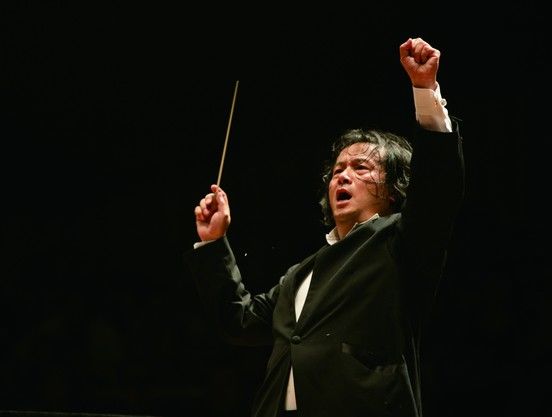Belgrade Philharmonic makes an enthusiastic showing at Carnegie
The Belgrade Philharmonic Orchestra entered Carnegie Hall on Thursday night as if it were completing a victory lap. This marked the penultimate event on the orchestra’s first American tour—four concerts in as many days in Chicago, Cleveland, Washington, and finally New York. Buoyed by an appreciative crowd with a large Serbian contingent in the hall, the orchestra hid any hints of exhaustion from a packed travel schedule within the celebratory atmosphere.
The tour is part of an ambitious plan to elevate the international reputation of the Philharmonic, as well as raise money from displaced Serbians in the U.S. towards a new concert hall. By the looks of the enthusiastic audience boasting a large percentage of Serbian speakers, the group could travel back to Belgrade, knowing it took an important first step toward realizing its goals.
Muhai Tang, a Chinese-born conductor who has led the orchestra since 2010, brought the audience to their feet with a ceremonial start, playing both the American and Serbian national anthems. Continuing on the nationalistic theme, the printed program led off with Tchaikovsky’s Slavonic March, which commemorates the Serbian-Turkish War (as well as Russia’s involvement on the side of the Serbs).
As one would expect, the Eastern European group had an affinity for this work, which incorporates folk themes as written by the 19th-century Serbian composer Kornelije Stanković. The sheer energy and excitement of the musicians compensated for some unpolished and unbalanced playing, particularly from a zealous horn section that often overwhelmed the melody in the strings. At key moments, such as the final bars Tang was able reign in the orchestra sections into a cohesive whole, which proved fruitful for the work’s triumphal coda.
Sibelius’s Symphony No. 2 also suffered from similar problems. Tang took a deliberate pace, often pausing in between the composer’s introduction of new themes to jarring effect. Instead of illuminating Sibelius “inner logic,” which holds the symphony together, the Belgrade musicians sometimes felt aimless and the dramatic tension so necessary to the work wasn’t sustained throughout. But when the orchestra did find its footing in the lush resolution of the fourth movement, the Philharmonic luxuriated in it, filling the hall with Sibelius’s glorious finale.
In between the two orchestral pieces, Serbian baritone Željko Lučić joined the performance, adding a bit of star power with highlights from his operatic repertoire. Currently inhabiting the title role in Verdi’s Macbeth at the Metropolitan Opera, he sang the character’s “Pieta, rispetto, amore” with the rich honeyed baritone for which he’s known. For “Pari siamo” from Rigoletto, he added a burnished quality with a touch of gravel to fully realize a portrait of the ill-fated jester. Even better was his encore “Eri tu” from Un Ballo in Maschera, a great baritone vehicle that required Lučić to fluctuate between furious rage and melancholy repentance, and finished with a towering and effortless high G.
For the Philharmonic’s own encore, Tang chose a pair of Serbian crowd pleasers. The first was “Turtledove” a lively dance from the ballet Legend of Ohrid by Stevan Hristić, a contemporary of Sibelius. Stanislav Binički’s World War I-era March on the Drina followed. Listening to the musicians perform these Slavic-tinged melodies with ease, one wonders whether they missed an opportunity to introduce less-familiar Serbian composers to a Western audience already acquainted with Tchaikovsky and Sibelius chestnuts. Perhaps, a second American tour for this promising ensemble might warrant such an occasion.







